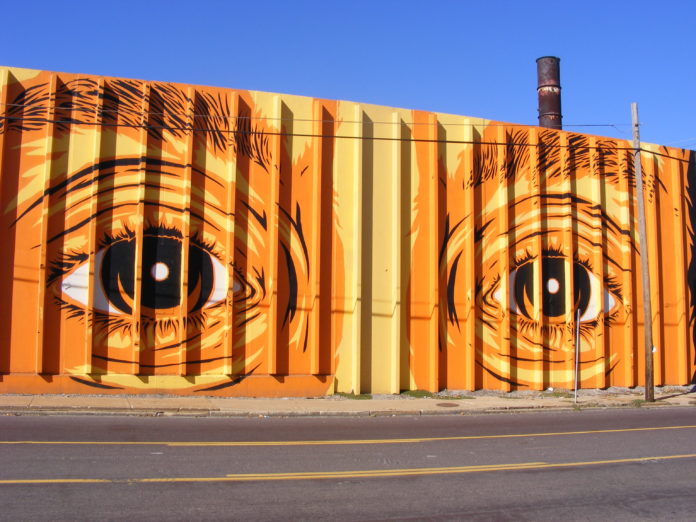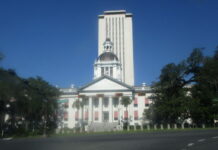
Photo Credit: Global Diaspora News (www.GlobalDiasporaNews.com).
The United Nations (UN) Alliance for Sustainable Fashion, launched at the fourth UN Environment Assembly (UNEA) in Nairobi, is seeking to halt the environmentally destructive practices of fashion, and instead shape the industry to be a driver for improving the world’s ecosystems.
“Research shows that fashion presents many opportunities for reducing waste and improving the environment,” said Siim Kiisler, President of UNEA in his statement during the launch.
The fashion industry accounts for 8-10 percent of global carbon emissions – more than all international flights and maritime shipping combined. Part of these emissions come from pumping water to irrigate crops like cotton, oil-based pesticides, machinery for harvesting, and emissions from transport.
The industry is the second-biggest consumer of water, generating around 20 percent of the world’s wastewater and releasing 500,000 tons of synthetic microfibers into the ocean yearly. One third of the microfiber plastic pollution in the oceans are coming out of the wash cycle of clothes.
Though the fashion industry is valued at around USD 2.4 trillion, it loses about USD 500 billion of value every year due to the lack of recycling and clothes that are thrown into landfills before ever being sold. As a result, this puts pressure on fragile ecosystems through the unsustainable sourcing of materials.
“The ferocious appetite for fashion is consuming resources unnecessarily,” said Musonda Mumba, Chief Terrestrial ecosystems unit, UN Environment.
Fashion as it is currently, is unsustainable with the average consumer buying 60 percent more pieces of clothing than 15 years ago and keeping each item for only half as long.
“Many people succumb to buying seasonal trends that then get thrown away within a couple of months, and it’s just not sustainable,” says Nadya Hutagalung, a UN Goodwill Ambassador and Indonesian-Australian supermodel. “At the launch of the UN Sustainable Fashion Alliance we get to see people developing new fibers that are sustainable, have low water impact and low impact on the environment where they’re produced.”
The implications of sustainable fashion are not confined to the environment, but also has social impacts as the industry employs over 75 million people globally. Greening the value-chain creates new jobs and opportunities for rural workers, especially smallholder farmers or those working in forestry.
“In the face of growing environmental threats, there is an urgent need to radically change our consumption and production systems. In this regard, a more sustainable fashion industry has a critical role to play,” said Naoko Ishii, CEO and Chairperson of the Global Environment Facility.
“The fashion industry cuts across many sectors, and so to capture the full opportunity, the UN and its partners need an integrated approach that goes beyond individual Sustainable Development Goals,” said Kiisler.
“By using fashion as a form of activism and empowerment, establishing innovative policies and sustainable businesses, the UN Alliance for Sustainable Fashion doesn’t perceive sustainability as a limitation to fashion, but rather a trigger for bringing real creativity and passion into the industry,” he added.
The Alliance is improving collaboration among UN agencies by analyzing their efforts in making fashion sustainable, identifying solutions and gaps in their actions, and presenting these findings to governments to trigger policy.
Moreover, the Alliance utilizes the convening power of the UN to bring key fashion players to the table for example, in the case of the Ethical Fashion Initiative – a partnership launched by the UN and World Trade Organization.
The UN Alliance for Sustainable Fashion is creating a common platform and dialogue for a host of UN agencies that are working to make fashion sustainable: The Food and Agricultural Organization (FAO) is promoting Blue Fashion, which uses sustainable marine materials and protects arable land; the International Trade Centre has set-up the Ethical Fashion Initiative to spotlight artisans from the developing world; and UN Environment is pushing governments to foster sustainable manufacturing practices.
Source of original article: Environment – Africa Science News (africasciencenews.org).
The content of this article does not necessarily reflect the views or opinion of Global Diaspora News (www.GlobalDiasporaNews.com).
To submit your press release: (https://www.GlobalDiasporaNews.com/pr).
To advertise on Global Diaspora News: (www.GlobalDiasporaNews.com/ads).
Sign up to Global Diaspora News newsletter: (https://www.GlobalDiasporaNews.com/newsletter/) to start receiving updates and opportunities directly in your email inbox for free.





























